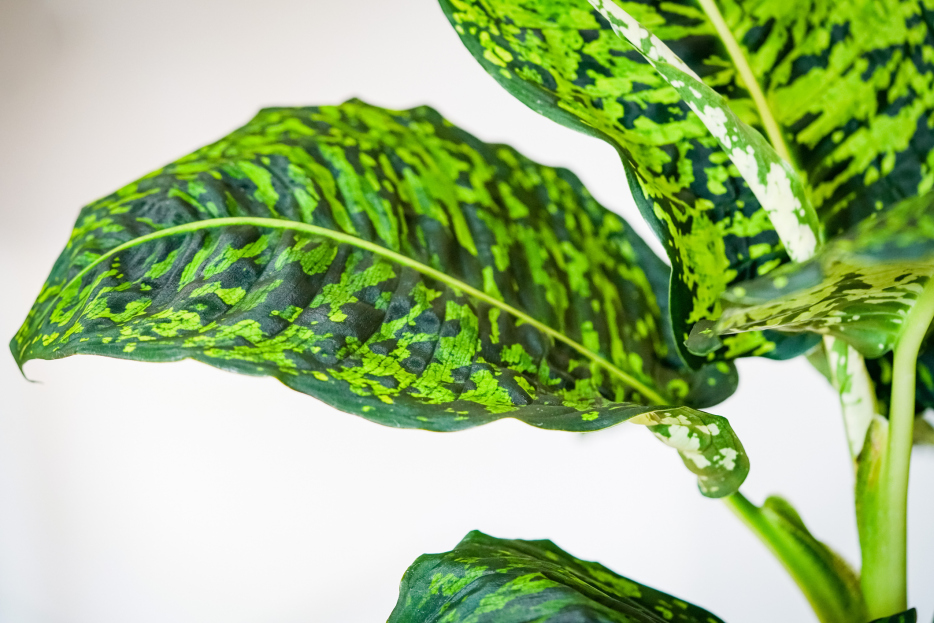
Dieffenbachia ‘Reflektor’ is a show-stopping tropical houseplant that brings bold variegation and vibrant color into your home. With its deep green leaves marbled in chartreuse and lime, this cultivar of the classic dumb cane is prized for its exotic appearance and lush, upright growth.
Native to the tropical forests of Central and South America, Dieffenbachia is known for its adaptability and ability to thrive indoors. ‘Reflektor’ takes that reputation a step further—offering even more intense coloration and a bit of extra drama.
Dieffenbachia ‘Reflektor’ prefers bright, indirect light. Place it near a north- or east-facing window or a few feet back from a sunny southern exposure. This will help maintain the bold variegation while preventing leaf scorch.
Dieffenbachia ‘Reflektor’ can tolerate lower light conditions but may become leggy and lose its vibrant contrast. Avoid direct sun, which can damage the leaves.
Keep the soil evenly moist, allowing the top inch to dry out between waterings. During spring and summer (its growing season), this might mean watering every 7–10 days, depending on your environment.
In winter, reduce watering as the plant’s growth slows. Overwatering can lead to root rot, so ensure proper drainage and always empty excess water from saucers.
As a tropical plant, ‘Reflektor’ thrives in moderate to high humidity—around 50% or higher is ideal. If the air in your home is dry, especially in winter, increase humidity with a humidifier, pebble tray, or regular misting.
Temperature-wise, keep it in a warm room between 65–80°F (18–27°C). Avoid cold drafts and sudden temperature drops, which can stress the plant.
Use a well-draining, peat-based potting mix with added perlite or coco coir. This provides the moisture retention Dieffenbachia likes without becoming waterlogged. Make sure the pot has drainage holes to prevent standing water.
Repot every 1–2 years, ideally in spring, when the plant outgrows its container or becomes root-bound.
Feed your ‘Reflektor’ every 4–6 weeks during the growing season with a balanced, water-soluble houseplant fertilizer diluted to half strength. Avoid overfeeding, which can lead to salt buildup and root damage.
Pause fertilizing in winter when the plant is less active.
Trim off any yellow or damaged leaves as needed to keep your plant looking neat and healthy. If the plant becomes too tall or leggy, you can cut back the stem just above a node—new growth will sprout below the cut.
Wipe the large leaves occasionally to remove dust and help the plant photosynthesize more efficiently.
Dieffenbachia is easily propagated by stem cuttings. Cut a healthy stem section with at least one node and root it in water or moist soil. Once roots develop, pot it up and continue regular care.
This is best done in spring or early summer for best success.
Like all Dieffenbachias, ‘Reflektor’ is toxic to pets and humans if ingested. It contains calcium oxalate crystals that can cause irritation, swelling, and nausea. Keep out of reach of pets and children, and wear gloves when pruning if you have sensitive skin.